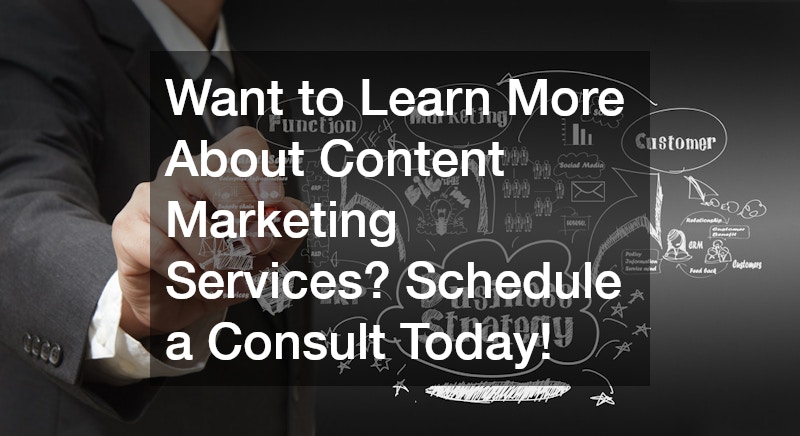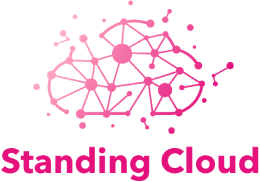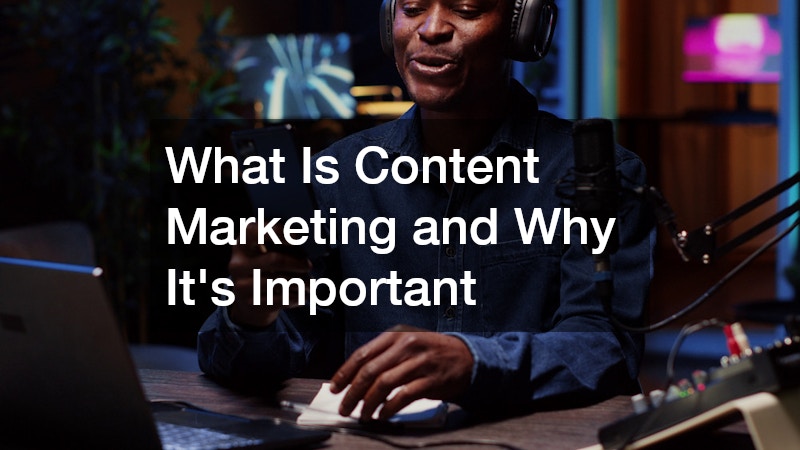Content marketing services have become an essential strategy for businesses looking to reach their audience in a meaningful way. It involves creating and sharing valuable content to attract and retain a clearly defined audience, ultimately driving profitable customer action. This article explores what content marketing is, its significance, and provides insights into frequently asked questions about this powerful marketing approach.
How Does Content Marketing Work?
Understanding the Basics of Content Marketing Services
At its core, content marketing focuses on creating relevant and valuable content to attract and engage a target audience. This involves understanding the needs and preferences of the audience and developing content that addresses those interests.
Effective content creation requires careful consideration of audience demographics, preferences, and behavior patterns.
Successful content marketing is not only about attracting attention but also about maintaining it. Regularly updated and informative content helps businesses remain top-of-mind and foster an emotional connection with their audience. By consistently delivering valuable insights, companies can position themselves as trustworthy sources of information.
The practice of content marketing allows businesses to meet their audience where they are, providing content that resonates and is easily accessible. Whether it’s through blog posts, social media updates, or videos, the diversity of content types enhances engagement. The goal is to build a community of loyal customers who see value in the brand’s offerings.
The Content Marketing Funnel Explained
The content marketing funnel outlines the stages a potential customer goes through, from awareness to conversion. At the top of the funnel (TOFU), content aims to generate awareness and attract a broad audience. Middle-of-funnel (MOFU) strategies focus on education and nurturing potential customers, while bottom-of-funnel (BOFU) tactics aim to drive action and conversion.
In the awareness stage, brands strive to capture attention and drive traffic with engaging content like blog articles, social media campaigns, and infographics. The consideration stage involves more in-depth content such as webinars, case studies, and comprehensive guides, to address specific interests and solutions. Finally, the conversion stage leverages testimonials, compelling calls-to-action, and tailored offerings to encourage purchasing decisions.
Understanding the funnel enables marketers to tailor content to each stage, optimizing the customer journey. By providing relevant content at each point, organizations can guide prospects seamlessly and efficiently towards conversion. This methodical approach not only aids in conversions but also strengthens brand loyalty and customer retention.
Measuring the Effectiveness of Your Content Marketing
To determine the success of content marketing efforts, it’s crucial to analyze key metrics and indicators. These include website traffic, engagement rates, lead generation, and conversion rates, which can be measured using various analytics tools. By monitoring these metrics, businesses can refine their strategies and ensure they are reaching their marketing goals.
Analytics tools provide valuable insights into how well content is performing and where improvements are needed. Understanding metrics such as bounce rates and time-on-page helps businesses optimize content for better user experience and engagement. As businesses track their performance, they can adapt to trends and audience feedback, driving continuous improvement.
Content marketing is a data-driven strategy, and success depends on analyzing and iterating based on real-time feedback. Businesses that effectively utilize performance data can execute more precise and impactful campaigns. This results in better ROI and a stronger competitive edge in the market.
How to Develop a Successful Content Marketing Strategy?
Identifying Your Target Audience
The first step in developing a content marketing strategy is to clearly define your target audience. Understanding their demographics, preferences, and challenges will guide the creation of content that resonates with them. By constructing detailed buyer personas, businesses can tailor their messaging to address specific needs and maximize engagement.
Identifying target audiences allows companies to focus efforts and resources where they are most effective. Thorough research into audience behavior and preferences unveils insights into content topics and formats that appeal best. Establishing clear audience segments supports personalized campaigns that convert leads into loyal customers.
Once audience identities and needs are understood, organizations can craft a content roadmap for each segment. This strategic approach facilitates structured content creation and targeted distribution, ensuring messages reach the right audiences at opportune times. As businesses better understand their audience, content can grow increasingly personalized and effective.
Creating a Content Calendar and Consistent Schedule
A content calendar helps in planning and organizing content creation and publication. Maintaining a consistent schedule ensures a steady flow of content, keeping the audience engaged and coming back for more. Regularity in content dissemination fosters a reliable source of information for audiences and builds anticipation for new material.
Content calendars encourage proactive planning and structure, mitigating last-minute stress and facilitating collaboration within teams. By outlining themes, formats, and timelines, businesses can systematically roll out campaigns and evaluate performance. This organized method sets expectations among audiences and maximizes the effectiveness of time-sensitive promotions.
The discipline of working from a content calendar contributes to better resource allocation and more seamless production workflows. Implementing consistent scheduling enhances brand visibility and consumer touchpoints. As producers track deadlines and adhere to publishing timelines, content continually aligns with marketing objectives and audience needs.
Leveraging Different Content Formats
Diversifying content formats can enhance engagement. Experimenting with blogs, videos, infographics, podcasts, and social media posts can cater to different preferences and expand your reach across various platforms. Engaging content in varied forms offers versatility, meeting audience consumption preferences while conveying messages creatively.
By leveraging multimedia and interactive content, businesses can captivate larger audiences and enhance memorability. Videos may provide educational insights, while infographics visually simplify complex information, catering to diverse learning styles. This strategic diversity enables businesses to extend their reach and nurture connections through innovative storytelling.
Adapting content to various platforms showcases a brand’s adaptability and addresses the expectations of digital-savvy consumers. A well-rounded content strategy builds brand omnipresence, deriving maximum engagement from each medium. As businesses innovate with different formats, they exhibit thought leadership and maintain relevancy in a dynamic market.
Content marketing is a dynamic tool that serves as the foundation for establishing meaningful relationships with the audience. By understanding its mechanisms, benefits, and implementation strategies, businesses can harness its potential to significantly impact their online presence, drive growth, and achieve marketing objectives. Embracing content marketing isn’t just an option – it’s a necessity in today’s competitive digital landscape.




